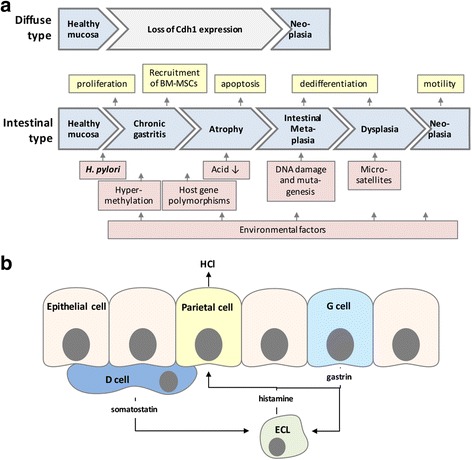Fig. 1.

Model of the gastric physiology and cancer development. a Infection with H. pylori has been strongly associated with the development of the diffuse type and the intestinal type of gastric cancer. The diffuse type is often accompanied by the loss of E-cadherin (CDH1) expression. The development of the intestinal type of gastric cancer is associated with chronic gastritis, atrophy, and intestinal metaplasia as precursors of dysplastic changes. Mutations, hypermethylation, and microsatellites, but also environmental factors are implicated in the carcinogenic process. In this model, chronic active inflammation represents the initial phase in carcinogenesis via alterations of epithelial apoptosis, cell proliferation, recruitment of BM-MSCs, dedifferentiation processes and induced invasive growth of neoplastic cells. b The gastric physiology is established by the coordinated action of paracrine factors and hormones. The epithelium contains parietal cells, D cells, G cells and circulating enterochromaffin-like (ECL) cells. The release of gastric acid by parietal cells is stimulated by ECL-secreted histamine and gastrin expressed by G cells. D cells produce the negative regulator somatostatin, which blocks acid secretion via direct effects on parietal cells and through the inhibition of histamine and gastrin release
